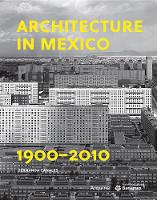


|
|
|
books
| book details |
Architecture in Mexico, 1900–2010
Edited by Fernanda Canales, Foreword by Luis Fernández-Galiano

|
| on special |
normal price: R 4 122.95
Price: R 3 916.95
|
| book description |
An authoritative, two-volume compendium of 20th- and 21st-century Mexican architecture This expanded two-volume edition of Arquine’s 2013 publication examines the architectural styles that have taken place in Mexico during the 20th century and the beginning of the 21st. The book is divided into six periods: the beginning of the century (1900–24); modernity (1925–39); the heroic period (1940–68); new monumentality (1969–89); end of the century (1990–99); and the first decade of the 21st century (2000–10). Architects include: Federico Mariscal, José Villagrán, Vicente Mendiola, Guillermo Zárraga, Roberto Ãlvarez Espinosa, Manuel Amábilis, Juan O’Gorman, Manuel Ortiz Monasterio, Bernardo Calderón, Luis Ãvila, Juan Segura, Carlos Obregón Santillana, Luis Barragán, Enrique del Moral, Augusto Ãlvarez, Mario Pani, Salvador Ortega, Luis Ramos Cunningham, Pedro RamÃrez Vázquez, Rafael Mijares, Jorge Campuzano, Ricardo Legorreta, Noé Castro, Ramiro Alatorre, Carlos Vargas, Teodoro González de León, Abraham Zabludovsky, Legorreta + Legorreta, Javier Sordo Madaleno, TEN Arquitectos and Luis Vicente Flores, among others.
| product details |

Normally shipped |
Publisher | Arquine
Published date | 1 Sep 2022
Language |
Format | Paperback / softback
Pages | 944
Dimensions | 318 x 241 x 0mm (L x W x H)
Weight | 0g
ISBN | 978-6-0776-1273-5
Readership Age |
BISAC | architecture / criticism
| other options |

Normally shipped |
Readership Age |
|
|
|
To view the items in your trolley please sign in.
| sign in |
|
|
|
| specials |
|

|
Carlo Rovelli
Paperback / softback
224 pages
was: R 295.95
now: R 265.95
|
Originally published in Italian: L'ordine del tempo (Milan: Adelphi Edizioni, 2017).
|
|

|
Carlo Rovelli
Paperback / softback
208 pages
was: R 295.95
now: R 265.95
|
|
|
|
|